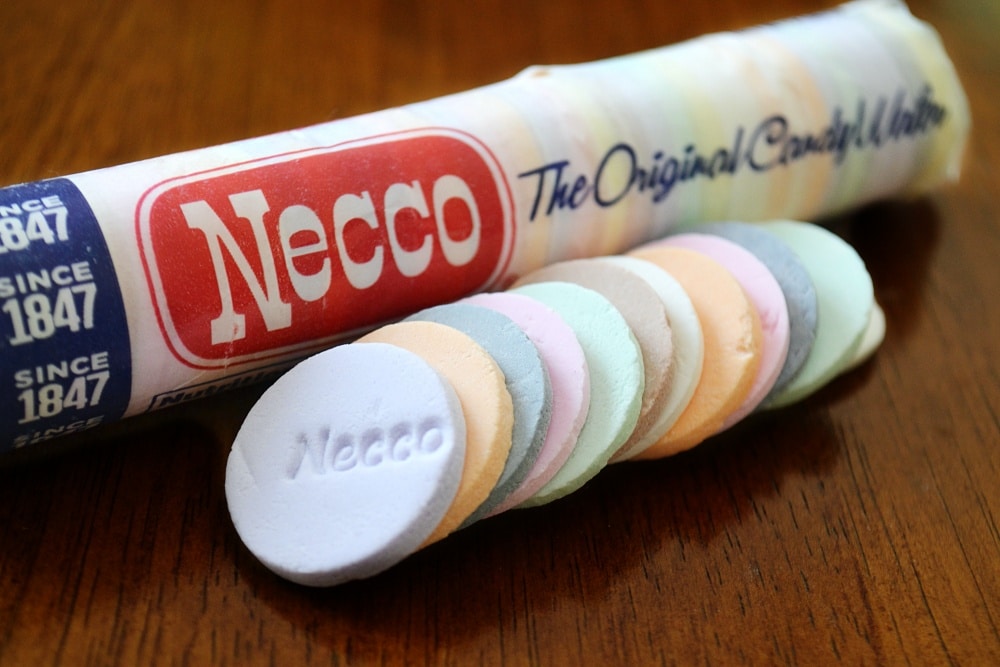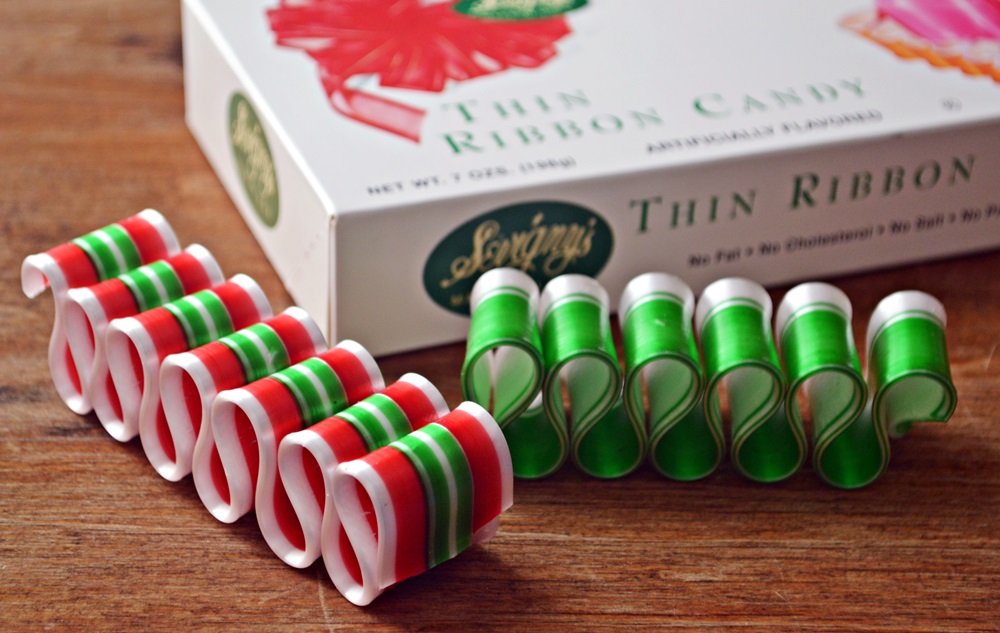10 Lost & Gone (But Not Forgotten) New England Food Brands
From Crown Pilot crackers to Squirrel Nut Zippers, these former New England–made treats stir up delicious memories.

Coffee By Design | Portland, Maine
Photo Credit : Katherine KeenanFor food lovers — and who among us isn’t? — there are few things sadder than when a cherished childhood treat disappears. Maybe we miss a one-of-a-kind flavor, like the vanilla/coffee/orange sherbet “Country Club” ice cream made popular by the now-defunct company James H. McManus. Or maybe we miss that feeling of pride that we took in, say, regional potato chips such as Vincent’s Chips (shuttered in the late 1990s) and Stateline (now made in Canada).
Below are some of our favorite New England food brands that are gone but not forgotten. And while a few have made comebacks from the great beyond, we should note that it’s from beyond the borders of our beloved New England.
10 Lost & Gone (But Not Forgotten) New England Food Brands
Necco Wafers
Not long after English immigrant Oliver Chase started marketing his “hub wafers” in Boston in 1847, their easy portability would make them popular with Union soldiers. In the early 1900s, Chase’s company merged with several others and formed the New England Confectionary Company (Necco). Rebranded as Necco Wafers in 1912, Chase’s creation became a New England mainstay for more than a century.
Necco Wafers disappeared when Necco went out of business in 2018. Two years later, Ohio-based Spangler Candy acquired the rights and recipe, and rolls of these multiflavored candies returned to store shelves.
There is nothing quite like a Necco Wafer, and although while some may say that’s a good thing, we die-hards stand by this oddly flavored, distinctly chalky favorite. Even if it’s no longer a New England product, we’re happy we can still enjoy letting a Necco Wafer melt on our tongue and arguing with our friends over what flavor it’s supposed to be.
Crown Pilot Crackers
The lineage of this New England food brand can be traced back to 1792 and a baker in Newburyport, Massachusetts, named John Pearson. Pearson’s version was known as Pilot Bread, a variation on the hardtack that had long been valued by sailors for its versatility and durability.
In 1889, Pearson & Sons Bakery was acquired with several others to form the New York Biscuit Company. Not long after, that company merged with the American Biscuit & Manufacturing Company to form the National Baking Company, which would end up doing business under the trade name Nabisco.
For many years, unsalted Crown Pilot crackers were Nabisco’s oldest recipe. They were available primarily in New England, where cooks came to love them as a not-so-secret ingredient in soups and chowders. Others folks crunched them straight from the box, slathered in jam or molasses.
Sales lagged in the late 1980s, and Nabisco discontinued production of Crown Pilot crackers in 1996. Protests from consumers prompted Nabisco to reverse course a year later, but sales never really rebounded. In 2008, Nabisco pulled the plug for good.
Granite State Potato Chips
In 1905 in Salem, New Hampshire, William “Buddy” Croft opened what is believed to have been the first commercial potato chip production facility in the country. His Granite State–brand chips were sometimes sold in bags but more notably in plastic buckets (and before that, cardboard cartons). And his company had the distinction of being the first ever to use New Hampshire’s iconic Old Man of the Mountain as part of a business logo.
Although Granite State chips remained popular for decades, the company found it increasingly hard to keep up with national competitors, and it ceased production in 2007.
Sweethearts
It just wouldn’t be Valentine’s Day without those little candy hearts with phrases printed on them. In the 1860s, Daniel Chase, brother of Necco founder Oliver Chase, perfected a machine that could print words on candy using red vegetable coloring. The process was refined over the years, and the first Sweethearts were marketed in 1902. Many of the words and sayings used on the hearts have been updated over the years, but a few date back to those early days, including “Be Good” and “Kiss Me.” Like Necco Wafers, they were acquired and are now produced by Spangler Candy.
State of Maine Pure Spruce Gum
In 1848, inspired by the Native American practice of chewing the flavorful resin from spruce trees, Maine businessman John B. Curtis started selling spruce resin as the first-ever commercial chewing gum. Over time, Curtis and his son tinkered a bit with the flavor and made the texture softer by adding paraffin.
They eventually opened a shop in Bangor, Maine, where they could be close to their product’s source. The younger Curtis became a traveling salesman, peddling the gum as well as other products, while his father handled production. Their business grew to employ 200 people in a three-story factory in Portland that cranked out 1,800 boxes of gum each day.
But after the chewing gum market began to boom in the late 1800s and early 1900s, State of Maine Pure Spruce Gum — and spruce gum generally — faded away. L.L. Bean sold a brand of spruce gum until the mid-1980s, but today it is difficult to find.

Photo Credit : Aimee Tucker
Sevigny’s Ribbon Candy
For more than 60 years, Massachusetts-based Sevigny’s was the go-to brand for thin ribbon candy, a beautiful, sugary treat popular during the holidays. In 1986, Sevigny’s was sold to F.B. Washburn Candy Company of Brockton, Massachusetts, which continued to sell the candy under the Sevigny’s name. Washburn, in fact, produced most of the commercially available ribbon candy in the country, including not only Sevigny’s but also the candy sold under the trade names of Russell Stover, Fannie Farmer, and others.
In 2018, Washburn decided to focus its business on lollipops and other traditional hard candies, and it shuttered its ribbon candy operations. The following year, West Coast–based Quality Candy Company acquired the Sevigny’s brand and moved production to its facilities in Mexico.

Photo Credit : Aimee Tucker
Humpty Dumpty Potato Chips
The Humpty Dumpty Potato Chip Company was founded in 1947 by Norman Cole and George Robinson in Scarborough, Maine. Eager snackers could buy chips directly (often still hot) at the production facility, although they were also bagged and distributed to retailers throughout New England. Flavored chips were a Humpty Dumpty specialty, including sour cream and clam, dill pickle, and bacon flavors.
After more than 40 years as an independent company, Humpty Dumpty was sold — first to Ohio-based Borden, then to a Canadian company called Small Fry, and finally to the Canadian company Old Dutch Foods. In New England, the chips continue to be sold under the Humpty Dumpty name. And although many longtime fans claim the product ain’t what it used to be, Old Dutch has continued to innovate, with offerings including buffalo wing, roast chicken, and jalapeño.
Squirrel Nut Zippers
Squirrel Nut Zippers were nutty, vanilla-flavored caramels originally produced in the 1920s by the Squirrel Brand Company of Cambridge, Massachusetts. The candy’s name was a play on the name of a popular Prohibition-era cocktail.
They remained a New England staple until 1999, when the Squirrel Brand Company was sold and moved to Texas. Then in 2004, Necco purchased the rights to produce Squirrel Nut Zippers and brought them home to New England.
As previously mentioned, however, Necco closed its doors in 2018. Unlike many of the company’s other products, Squirrel Nut Zippers (along with their chocolate-flavored cousins, Squirrel Nut Caramels) have not yet found a new producer.
ZaRex
Once upon a time, ZaRex syrup was arguably New England’s most versatile flavor additive. Add one part ZaRex to seven parts ice water or lemonade, and you’d have a sweet, fruity drink. Replace the ice water with soda water, and you’d have a delicious pop. Snow cones, cocktails, smoothies, ice cream, muffins — they all could be improved with a shot of ZaRex.
Commonly available in raspberry, grape, fruit punch, and orange, ZaRex was created by the One Pie Canning Company in the 1930s and had a solid 50-year run before sales started slowing in the 1980s. Production ceased in 2008.
In 2010, a pair of Massachusetts entrepreneurs bought the ZaRex name and recipe and brought it back to market, although it seems to have fallen out of production again in the years since.
Schultz Hot Dogs
Started in Portsmouth, New Hampshire, by Carl Schultz and Ted Bettcher, Schultz Hot Dogs became a Seacoast favorite soon after introducing its franks in 1933. Schultz-brand hot dogs maintained their popularity for decades, even after the recipe was lost in a fire in 1990. In 1992 the business was sold to Maine’s Jordan Meats, then sold twice more before landing with Arkansas-based Tyson in 2001. But then the brand’s value had faded to the point that Tyson shut it down in 2004.
All is not lost, however. Ken Bettcher, Ted’s son, teamed up with Shields Meats of Kennebunk, Maine, to create the closest facsimile of Schultz’s original recipe as possible. The result, Shields Provisions natural-casing frankfurters, is a worthy successor.
What are the New England food brands you miss the most? Tell us in the comments below!








I miss Friends yelloweye baked beans. Made great sandwiches.
A big one in my family from Maine was “Peach Blossoms” I think from the same company as Necco Wafers. Was terribly sad when they stopped making them. I used to get several cans for my Mom in NJ for Christmas, she loves them.????
Oh yes, “Peach Blossoms” love them, were always in the house growing up, especially at Christmas.
Snows Clam Chowder! I grew up with it. Hard to believe it didn’t make this list.
Crown Pilots were what my family put in the chowder (haddock or clam) we ate every Friday night, a whole box of them for five people. My dad, a Depression kid, thought crushed Pilots and milk was the best hot weather lunch ever. When Nabisco decided to cease production, the women of the Chebeague Island, Maine Methodist Church (the only church on the island) started the letter-writing campaign that convinced it to give the cracker a reprieve. Nabisco turned the campaign into the focus of a “we listen” ad campaign.
I live in Florida now but when I return to N.E. I always try to stock up on items I can’t get here. Howards Piccalilli , Ah so sauce, hot dog rolls #1 and what has happened to Habatant pea soup? Now Friendly’s isn’t even N.E. very sad.
What about Blackstone Potato Chips, the mainstay of central Massachusetts and Rhode Island, made in Blackstone, MA. The BEST!!
Anyone remember Cott Syrup. A fruit flavored syrup you mixed with water. We had it every summer when we visited New Hampshire.
We loved Cott Syrup. Great memories of drinking it on a hot day after swimming in Lake Winnipesaukee.
PAL, orange and grape drink. A staple in my 1950s childhood home in Waterbury, Connecticut.
Remember it well!
As a kid, growing up in Manchester, CT, I never liked carbonated drinks. At birthday parties where Coke was the drink of choice, the parents always had to remember to buy non-carbonated Pal ( usually orange) for me! What a pain I must have been! (I still don’t like Coke!)
My family is from Bennington, Vermont. My grandmother used to chew spruce gum all the time! I can still remember the smell. I currently live on the opposite side of the country (Oregon) and it may amuse you that one of the foods that you mentioned in a previous article (Ah-So Sauce) is carried in one of our local stores! I couldn’t believe my eyes and now I buy ahead on it just in case!!
I am also a New England transplant (NH) in Oregon and I have not found Ah-So Sauce here. We have had to order it online. Where did you find it? I have been unable to find many of our favorite NE things here.
An Amato’s Italian and a bag of Humpty Dumpty chips….heaven!
Where was table talk pies in the discussion? My favorite was the blueberry pie, served when A&P Jane Parker spice bar was unavailable. Thanks for the memories.
Bought ribbon candy for Christmas. It’s still delicious even though not made in New England. I can still find NECCO wafers in some grocery stores. But I do miss Squirrel nut zippers. Was my dad’s favorite candy.
On Green street in Worcester, Mass. We went there often. I can still buy the small ones at my grocery store.
“The Pie Store” for Table Talk pies is located on Green Street in Worcester. You can buy 3 4″ pies there for $1, and the variety is way above anything you find in a local grocery store.
They are still made somewhere, I can buy them at a small grocery store on Orcas Island, Washington State.
Baileys ice cream sundae from Boston and Brookline was the best. The Chocolate sauce was the best!! I miss it still.
That was great to read about the old products I would buy years ago. Nice to see some have survived over years. Now I need to find location of these iyems
Sometimes the Vermont Country Store still has some of the oldies but goodies in stock.
I have a bottle of Zarex in my basement. Keeping it for old time sake I guess. We also have 2 quart bottles of Croft Ale, unopened.
A bottle of Zarex Lemon and Lime syrup would always go into my Grandmothers iced tea which was minty and lemony.
When taking my dad to his job ( he worked as first engineer on the Crest for Maine Fisheries in Portland) we would go up the hill to the Table Talk Pies store and stock up on pies. Favorites included Chocolate Eclair, Apple and Blueberry. We also went to the Nissen Bakery Thrift Store and stocked up on all other bakery items including Drake yummies. I grew up in Thomaston.
Waleeco Coconut Bar made by F B Washburn Candy, Brockton. Loved getting them trick or treating in the 1960’s.
Sorry but the glaring omission on this list is State Line Potato Chips.. and Blackstone, as well…. time marches on
Oh Boy…I agree State Line were the best. After I moved to Boston I lways brought back a lot of State Line when visiting my parents in Lenox!
Royal feast potato chips-on the boulevard in lowell
Royal Feast were the best in my opinion but truth be told there were some family members that preferred Granite State. Sad that both are gone.
Does anyone remember Waterman’s mints?
They came in individual green foil under cellophane wrappers. They were hard molasses with thin green stripes. They became soft and chewy after much chewing. They were wonderful.
(And does anyone know where to buy them?)
My Grandmother always had a dish of these on her Livingroom coffee table.
Squirrel Nuts were the best. I lived in California and worked with a man from Barrington. He would go home to visit his parents and always brought Squirrel Nuts back for me❤️❤️????
Great Barrington, MA or Barrington RI??
Remember Pickwick Ale ?
Red Hot Dollar Candies. They weren’t hot, but boy were they good. I wish they would bring them back in the larger size, not the smaller size.
Necco Wafers??
My Father used to make root beer in quantities from some mixture with water and apparently using yeast as it was stored in the cool basement in sealed jars and sometimes, a jar would explode. It was real good tasting root beer,
Why aren’t top split hotdog buns not sold outside New England? I miss them.
I live in north west pa. Sometimes I can find the buns at Walmart!
Several of these candies mentioned were specifically requested by our Maine veterans in the American Legion Auxiliary’s Adopt-a-Vet Christmas program. It was saddening not to be able to oblige our heroes.
“Peach Blossoms” – always a special treat at Christmas when we visited my great-aunt’s home. Last found at a lovely small store in our hometown in Western MD. Wish someone would attempt to make them again!????
Loved visiting my great-aunt’s home at Christmas. She always had a lovely candy dish filled with Peach Blossoms on a table in the formal living room. What a special treat for my father & me! Just 3 years ago could still find in a lovely small grocery in our hometown in Western MD. Wish someone would try to recreate this delicious candy!
When our daughter was about ten, her Dad was out mowing the lawn, and she thought he must be hot, so she decided to make him a cold drink. She got a big glass and filled it—-half ZaRex and half cold water. He drank it with a thank you and a smile!!
Thank You for this information, it was nice to read about the candy we had when we were young, best candy ever. For the first time in about 3 years I was able to get some ribbon candy.
My great great grandfather George Farrah Sleeper(1834-1909), a caterer and restaurant owner in
Lynn, MA and owner of the sea View House at Revere Beach, was cited in the 1882 Revere Journal as “the well known manufacturer of Revere Beach Chips.” He packaged and sold chips in addition to serving them in his restaurant. He sold the business to Boyd’s before June 22, 1895, when the potato chip factory at 116 and 118 Central Street in Lynn was destroyed
by fire and one thousand bushels of potatoes and five tons of lard as well as expensive equipment were destroyed.
I live in Pa. From Shirley, Mass. When I do make it home I have to stock up on Mouse and tries I’m potaoe chips.
neco wafers can be found at cracker barrel !
And Stop and Shop- many places. Amazon too.
Four items that I miss: Pepperidge Farms Sesame and Pepperidge Farms Pumpernickel Cracker Sticks. Also, when I was a child in the 60’s and 70’s we never went on our beach vacations to Hampton Beach without my mother bring along the Nabisco Cookie variety pack. It contained oreos, chocolate chip cookies, sugar wafers and vienna fingers. It was a great selection and always pleased us. I miss the Nabisco Chocolate covered Graham Crackers. Other brands have them out in the market, but none compare to the Nabisco brand.
Miss Pepperidge Sesame Cracker Sticks; Pumpernickel Crackers Sticks; Nabisco Choc. Covered Graham Crackers; and Nabisco Cookie Variety Pack, containing oreos, choc.chip cookies, vienna fingers and sugar wafers. Mom always brought this variety pack to Hampton Beach on our summer vacations.
Reminiscing here is fun. Items that are not the same as they used to be when a new company took over the “recipes” are : Necco Wafers Smaller and thinner than the original ones and the roll has been cut down in size. Maypo Cereal : Now made in the midwest , the quality of the oatmeal is not the same and the Maple flavoring in the cereal is almost none existent. Humpty Dumpty potato chips. I have been buying the “new” ones cooked in Canada . For some reason the Bar B Que ones are not at “hot” as the ones that were originally made in Scarborough , Maine. My father used to vacation in Maine and the HD chips was top priority to buy when he arrived here. The new ones taste more sugary than they do hot. I live in Salem and I sure do miss going to the Granite State Potato Chip factory and walking in to either get a box or a tub of chips that they would fill from what looked like and endless supply of chips coming out the chute behind the counter. Also on Saturdays , it was a rush to the finish to get there to get fresh roasted cashews before they were all sold out. What is misreported here, is that the fact that the factory was going to be required to update their machinery and standards to conform with regulations. The one owner wanted to keep the business going , but the other owner was tired of working the company and forced a sell out of the business. I can still remember the smoke and steam coming out the steel smokestack on the building and being able to smell the oil about a half mile before getting to the factory. Other products that had a good reputation and a good product were cheapened and sold to the people as ” original recipes” and rode on the reputation of the original product and sometimes droved the product right into the ground. I sometimes get disgusted with the way things go. Even Hershey bars, Mounds candies, Drakes Ring Dings, have all been shrunk down and mongrelized . And they call it PROGRESS !!!!
Continuing Richard’s thoughts about Granite State Chips, my family lived on Joseph Road behind the chip factory in the early 1970’s when that street was brand new…and I will never forget walking to my bus stop early each morning and smelling the chips being made…impossible for me to forget…and going into the store and seeing fresh chips coming out of the chute and being boxed or put into the plastic containers…nothing like ‘em….????❤️
I remember them all!
BTW: I ordered Peach Blossoms from Amazon last year, but some were crushed.
I miss Zagnut bars! They were the best. I also miss Cho Chos which may have been a PA product. It was a malted milk ice cream cup with possibly a little chocolate flavoring. It was formed in a little dixie like cup with a stick.
Neccos melting on your tongue?? I can’t imagine Neccos without that unique crunch. After they weren’t available for a while, I’m still grateful for every roll and every wafer. My granddaughter even gave me some for Christmas. But every roll and every wafer also make me a little sad. Although the flavors and textures are the same, they’re produced sloppily in Mexico, missing the feel of that tightly packed package and with the wafers scrunchy and uneven, and the logo missing, or offcenter. I feel curmudgeonly complaining about such trifles, but somehow the perfection of Neccos wafers and packaging as well as the candy itself were part of the pleasure.
Proud to be a fan of Necco Wafers, the union soldier favorite. But also proud that they are still available from my home state of O-H-I-O.
I miss the Beer Chaser crackers made by Sunshine Bakery!
Does anyone remember a long shortbread type bottom cookie that was chocolate covered cookie with peanut butter inside. They were about 4 inches long and came in a small long package?
I think they were called Ideals. Twix are similar but have caramel.
Canned One Pie Squash is missing in action as well! New England Squash pie was a must for Thanksgiving dinner! I used to find it at the Stop & Shop, but haven’t seen it in years! Sad.
You can find it on Amazon. Pricey but yummy.
The NECCO company also made SkyBars, 4 flavors in one bar. The production equipment and name were bought at auction by a woman in Sudbury, Massachusetts, and she has begun producing them again. Yay!! I still haven’t found them, but just the notion that they are out there will sustain me in my quest.
We’d use Necco wafers as communion wafers when we played Mass. (back in the 50’s. Also would go to Old Kerry Bottling in Haverhill MA to pick up two wooden divider cases of ‘tonic’ (never called it ‘soda’) One case for the kids and one for the adults.
http://www.skybarcandy.com or Amazon !
I miss Dorothy Muriel’s located inside the Brigham Ice Cream store. We’d get their cinnamon sticks. The Best!!! I also miss The peanut butter we would scoop out of the vats at the A & P grocery store in Melrose Mass. My dad would get us the coffee flavoring we’d put in milk from the Abe Lincoln bank jars. Does anyone remember them. I found a few of the glass banks on EBay luckily.
Does anyone know about or remember Chumm Gum?
Clark Bars? Are they still around? My favorite!
I still haven’t found a potato chip better than Stateline Chips….Cape Cod Chips are close though.
Sara Lee Banana Cake. I can still taste it even though it’s been gone for a long time. Banana frosting and very moist. Could be eaten cold or defrosted and you would lick the aluminum pan when done.This was a special treat on my birthdays .
Both Necco Wafers and Sweethearts are now being made by Spangler candy company and available for purchase.
I remember most of these. The big choice we kids had to make was State Line or Wise potato chips (5c a bag). Depended on what mood we were in. Squirrel Nuts. 2 for a penny. And ZaRex, well, we used to have huge family picnics (I think over a hundred) at Indian Well state park, CT and ZaRex was always the drink/punch of choice for my grandmother.